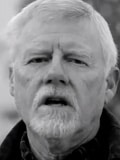
Dwight T. Pitcaithley
I recently recorded a 30-second video for the Call on Me Now campaign. In it I join other citizens in urging the president to ask us to do more in rebuilding our country.
I hope the Call on Me Now spots will help spark a national dialogue about how much we’re willing to do as individuals for our country. Everyone seems to think Americans are selfish, and only interested in feathering their own nests. In my experience, that’s not true. We all want to contribute to our country. We can do a lot more than we’ve been asked to do so far.
Personal responsibility goes a long way in building community and country. In some instances progress can only be made collectively; in others individual action will move us where we need to go.
Given the present state of things, I believe we need to be personally more thoughtful and less angry. We need to be less influenced by political provocateurs and more responsible for developing our own political philosophy. We need to acknowledge the fact that personal and corporate greed has had a debilitating effect on this nation. We need to understand that our daily personal choices – in the cars we drive and the food we eat – have ramifications far beyond our homes and towns. We need to have a dispassionate conversation about climate change before thoughtful alternatives are beyond our reach.
We need to demand that our elected officials shed more light and less heat on the critical issues facing this nation. And we need to agree that we will solve those problems not by shouting at each other or drawing lines in the sand, but by objectively analyzing our options and coming to informed and sustainable decisions.
In my video I ask the president to “Call on me. I’ll do my part.” If you have a chance, I hope you look at it, and the other short videos on the Call on Me Now website. If you agree with what we’re saying, perhaps you could forward the videos to your friends.
Dwight T. Pitcaithley was born in Carlsbad and served in the U.S. Marine Corps from 1964 to 1967. He holds degrees from Eastern New Mexico University and Texas Tech University. In 1976 he entered the National Park Service, where he served as chief historian from 1995 to 2005. He lives with his wife and family in Las Cruces.
